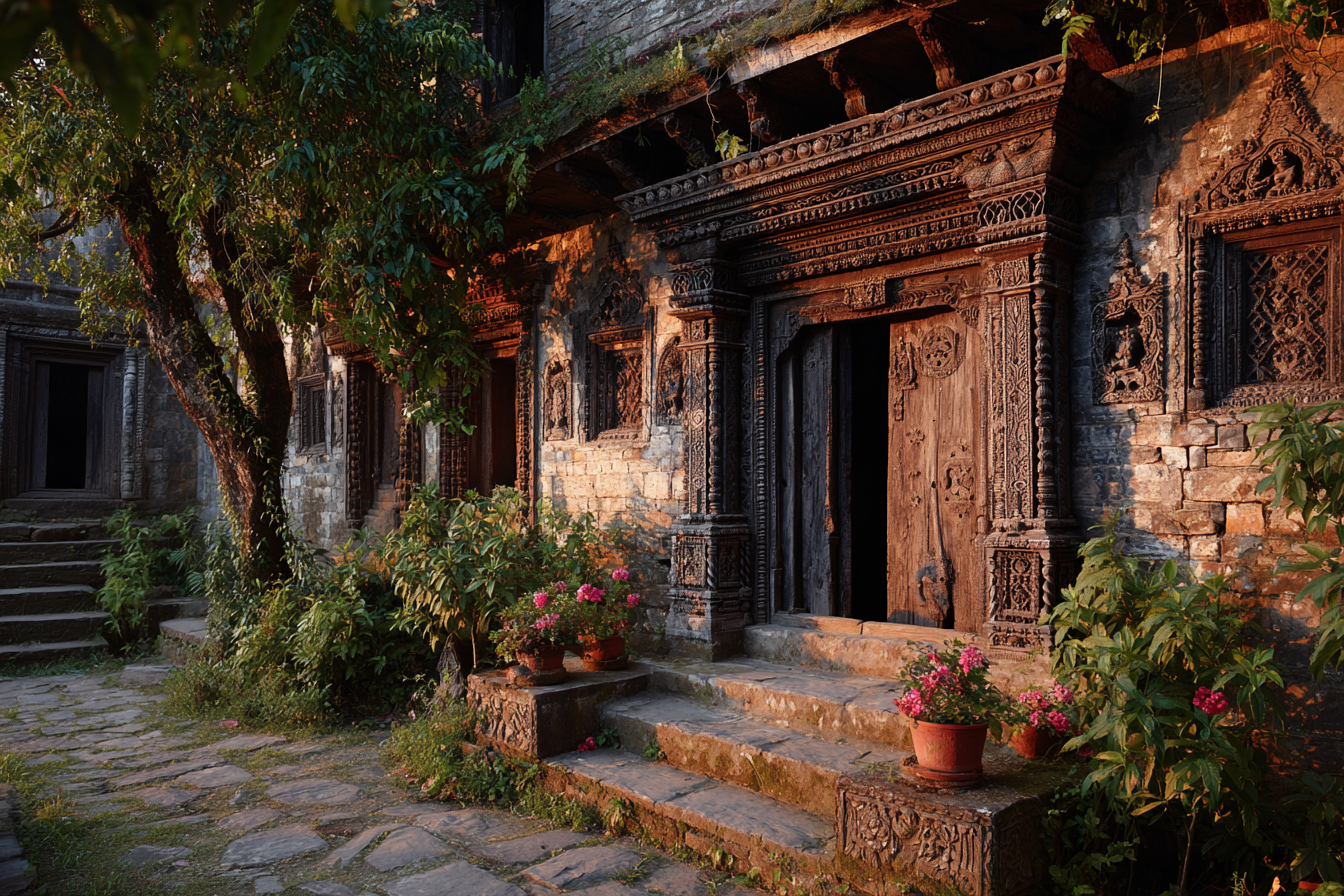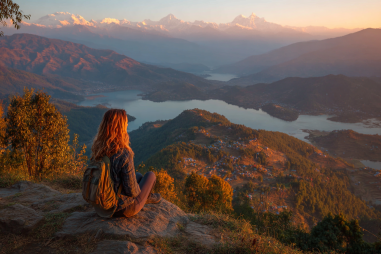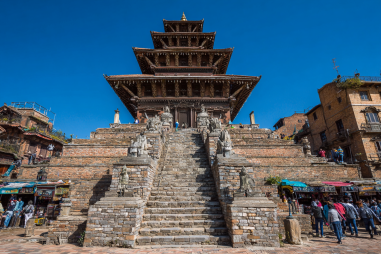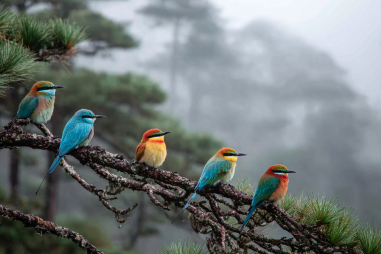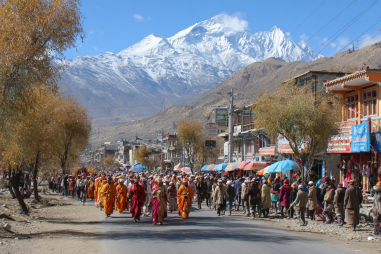Nestled in the scenic hills of southern Nepal, Bandipur is more than just a picturesque hilltop town; it is a vibrant canvas of history and culture. Known for its preserved architecture and ancient temples, Bandipur invites travelers to journey through time and uncover the stories embedded in its streets and structures. Whether you are a history enthusiast or a casual visitor, the rich historical sites sprinkled across this enchanting town offer a remarkable glimpse into the past, while the living traditions of the local community bring the heritage to life.
Introduction to Bandipur’s History
Bandipur’s history dates back several centuries, serving as a strategic market town on the trans-Himalayan trade route. Its location made it a hub for cultural exchange and commerce between the hills and the plains, as well as between Nepal and Tibet. This intersection of trade and culture allowed Bandipur to flourish, cultivating a unique blend of Newari traditions, architecture, and lifestyle. Over time, the town became a thriving center of artisanal crafts, religion, and agriculture, preserving an old-world charm that remarkably endures today.
The town’s historical importance is often reflected in its well-maintained buildings, narrow cobblestone streets, and the warmth of its inhabitants who continue to honor their ancestral customs. Understanding Bandipur’s history means appreciating the layers of cultural influences and the steadfast preservation of its heritage sites, which together tell the story of a once bustling trade crossroads turned into a peaceful cultural enclave.
Notable Historical Temples and Architecture
One of the most captivating aspects of Bandipur is its collection of ancient temples and traditional Newari-style architecture. These religious monuments not only provide spiritual sanctuaries but also exemplify the artistic and architectural expertise of the region’s forebears.
Among the most revered temples is the Bindhyabasini Temple, perched atop a hill and dedicated to the goddess Bhagwati. The temple’s intricate wood carvings and pagoda-style roofs are perfect examples of classic Newari architecture. Visitors often climb up to the temple to enjoy panoramic views of the surrounding valleys and mountain ranges, making it both a spiritual and scenic highlight.
Another significant temple is the Siddha Baba Temple, which holds local religious importance and is frequently the site of vibrant festivals. The architecture here and in other temples such as the Ganesh Temple inside the town reflects a blend of Hindu and Buddhist influences that have coexisted harmoniously for centuries.
Beyond temples, the town’s architecture showcases the traditional Newari homes characterized by carved wooden windows and doors, brick façades adorned with motifs, and tiered roofs made of slate tiles. These structures have been preserved meticulously, providing visitors with a rare window into the artistic endeavors and lifestyle of historic Nepalese societies.
Heritage Buildings and Preservation
Bandipur’s commitment to heritage preservation is evident throughout its town center, where many original buildings date back to the 18th and 19th centuries. The local community, along with conservation groups, has actively worked to maintain the traditional aesthetic and structural integrity of these buildings.
Many homes and public structures still feature the characteristic Newari design elements, which have been carefully restored to prevent decay and modern alterations that might detract from their historical value. This dedication to preservation creates a living museum effect, where the past isn’t just remembered but actively lived and experienced.
The old hospital, the royal house, and traditional shops have been maintained or converted into museums, cultural centers, and guesthouses, allowing visitors to engage directly with Bandipur’s heritage. This thoughtful repurposing supports both conservation and the local economy, making preservation a community-driven, sustainable effort.
Impact of History on Local Culture
The rich history of Bandipur deeply influences its local culture, from religious practices and festivals to traditional arts and daily life. The residents are predominantly of Newari and Gurung heritage, and their customs reflect a harmonious blending that has been nurtured over centuries.
Fairs and festivals in Bandipur often revolve around historical and religious events, featuring age-old rituals, music, and dance performances. The cultural vibrancy seen during festivals such as Bisket Jatra (New Year celebration) or the Chariot Festival ties the community directly to its historical roots, fostering a strong sense of identity and continuity.
Craftsmanship remains a vital part of local culture, with artisans producing wood carvings, metalwork, and traditional textiles using methods handed down through generations. This artistry not only preserves heritage techniques but also signals the community’s reverence for its history.
Guided Tours and Museums
For those eager to delve deeper into Bandipur’s history, guided tours and museums provide invaluable insights and contextual information. Many local guides offer walking tours through the town’s historic district, sharing stories about the buildings, the role of Bandipur in trade, and the legends behind prominent temples.
The Bandipur Museum itself is a treasure trove of artifacts, photographs, and exhibits documenting the town’s past. Housed in a restored traditional building, the museum covers topics from the trade history and cultural evolution to important personalities linked to the town’s heritage.
Visitors can also explore various smaller galleries and cultural centers where temporary exhibits and workshops on traditional crafts and folklore are frequently held, making the historical exploration interactive and engaging.
Visiting Protocols and Tips
When exploring Bandipur’s historical sites, respectful visiting protocols enhance the experience and support preservation efforts. Here are some useful tips:
- Dress modestly: As many sites are religious, wearing modest clothing is appreciated.
- Seek permission: Always ask before photographing people or entering private heritage homes and some temples.
- Hire local guides: Supporting local guides not only enriches your knowledge but benefits the community as well.
- Stay on designated paths: This helps protect fragile structures and the town’s traditional atmosphere.
- Participate respectfully in festivals: Enjoy cultural events while being mindful of their religious and cultural significance.
Additionally, consider timing your visit to coincide with local festivals to witness Bandipur’s heritage in vibrant motion, but also be prepared for some areas to be crowded. Off-season visits allow for a quieter, more contemplative exploration.
Embracing the Legacy of Bandipur
Exploring Bandipur’s historical sites offers more than just a tour of ancient temples and heritage buildings; it is an invitation to connect with a living culture where past and present coexist harmoniously. The town’s careful preservation efforts, combined with the warmth and traditions of its people, ensure that visitors leave with a deeper appreciation for Nepal’s rich history and diverse heritage.
Whether wandering its cobbled streets, breathing in the mountain air atop a temple hill, or learning from knowledgeable guides, uncovering Bandipur’s history is a rewarding journey that stays with you long after you depart. It reminds us how history shapes identity and how preserving our stories creates bridges between generations and cultures.

